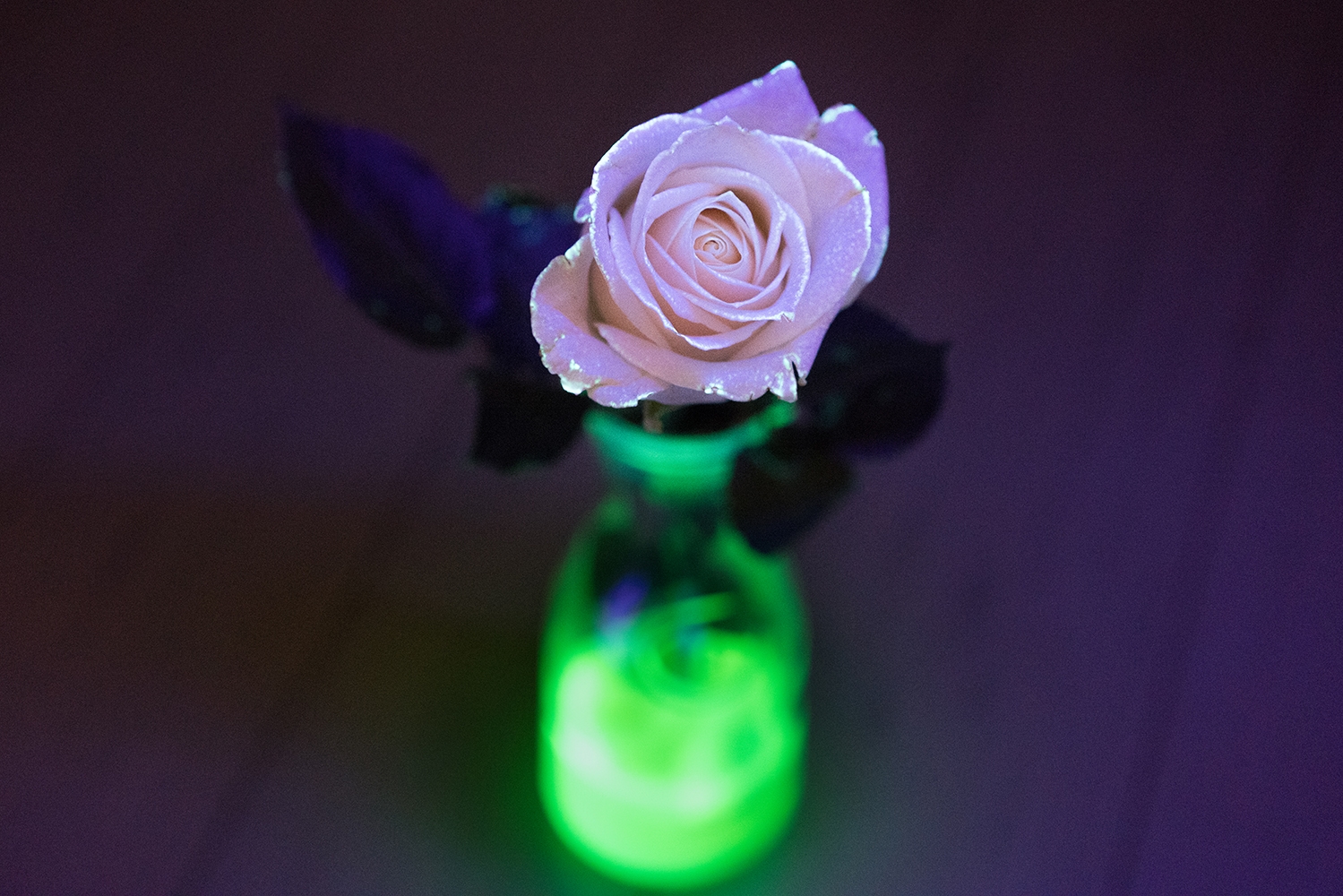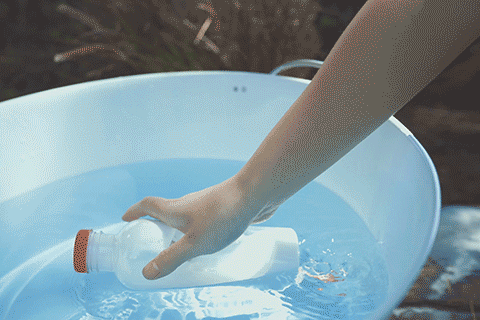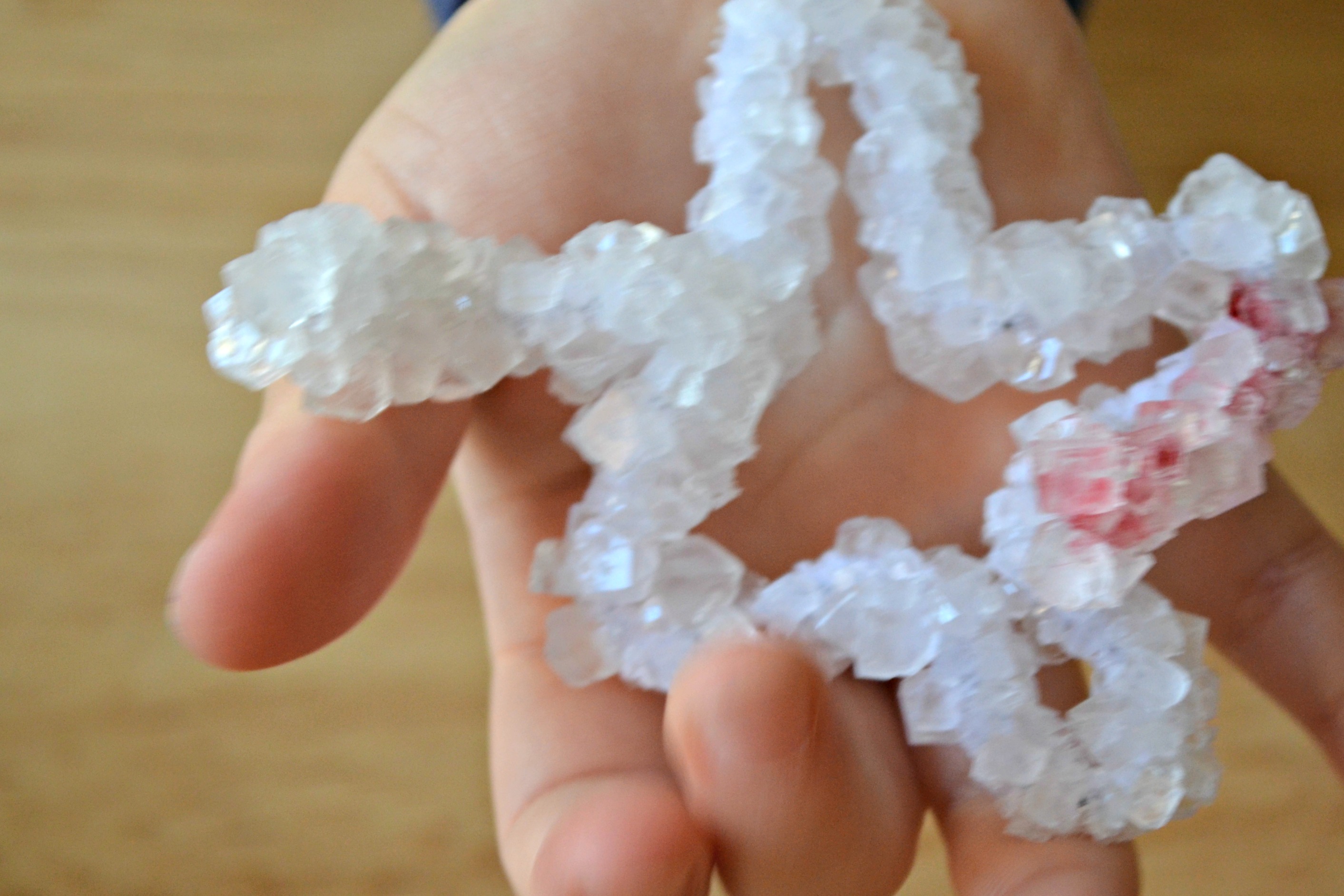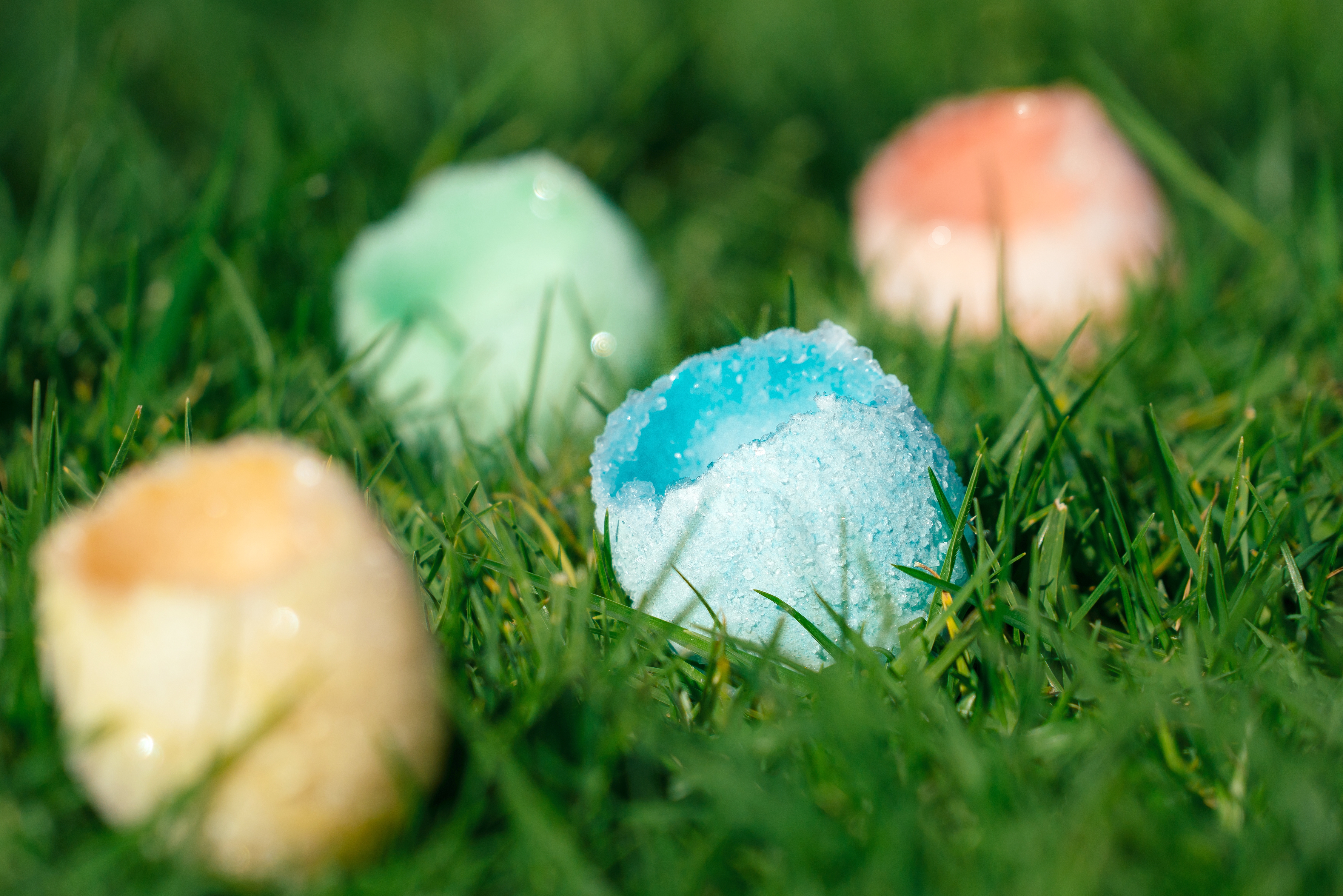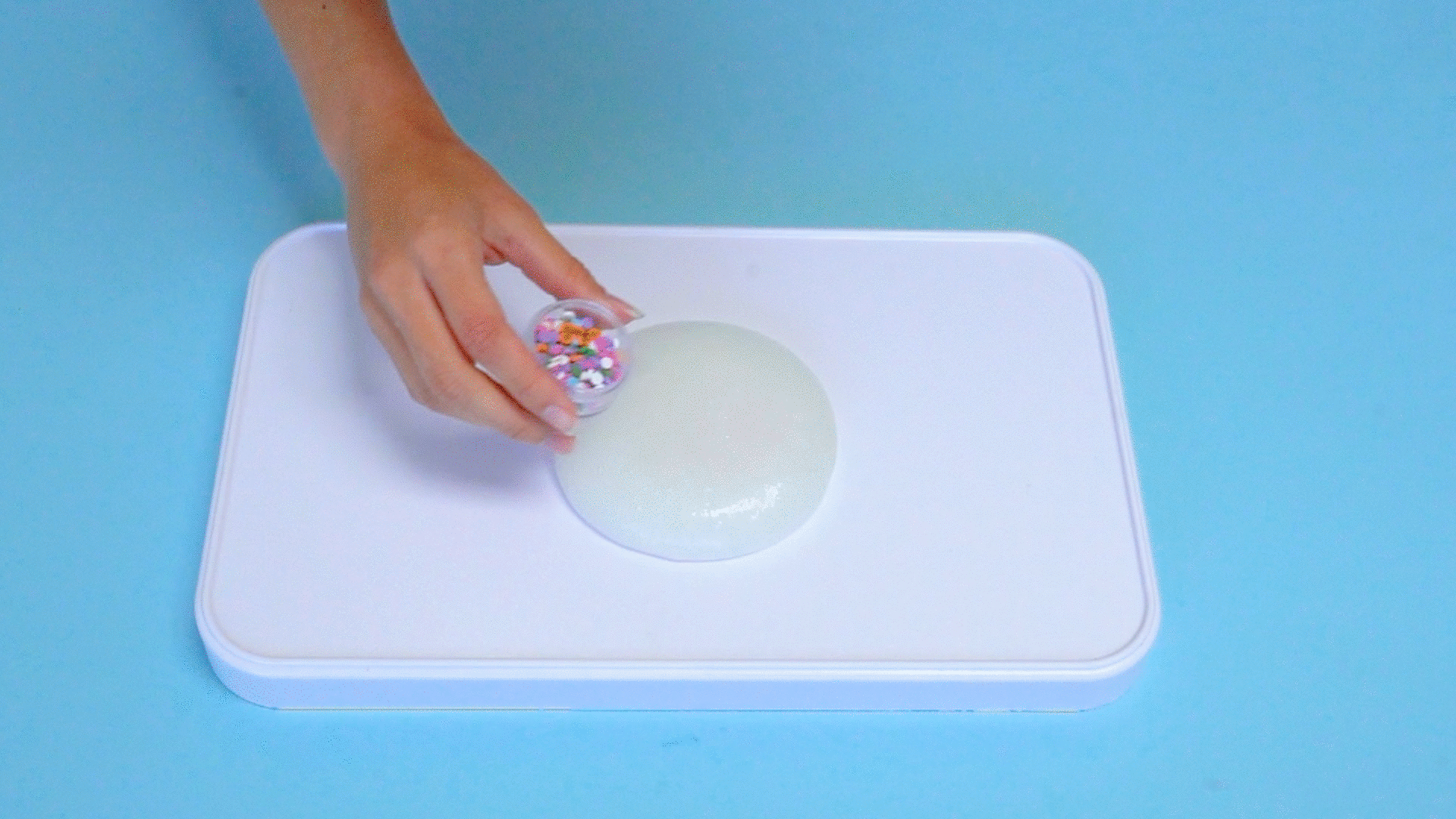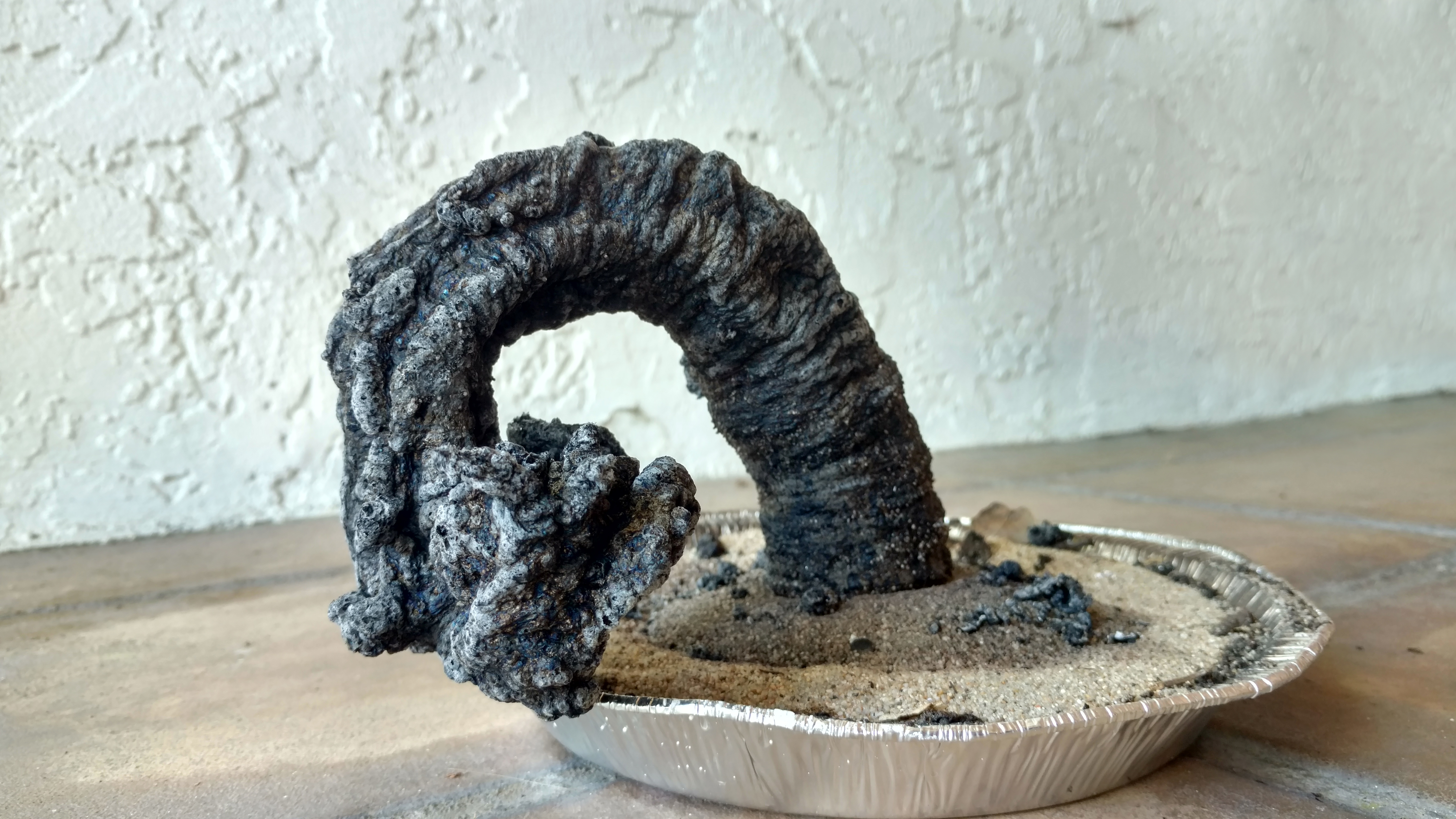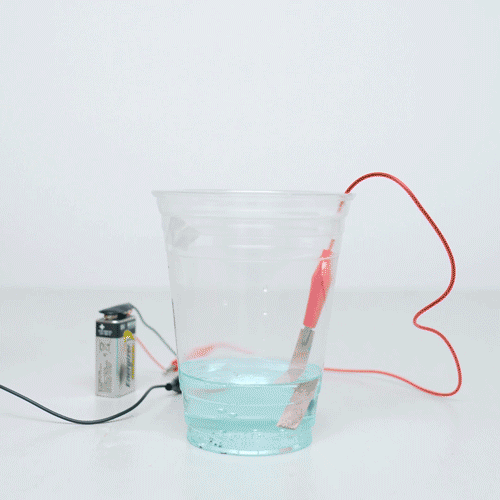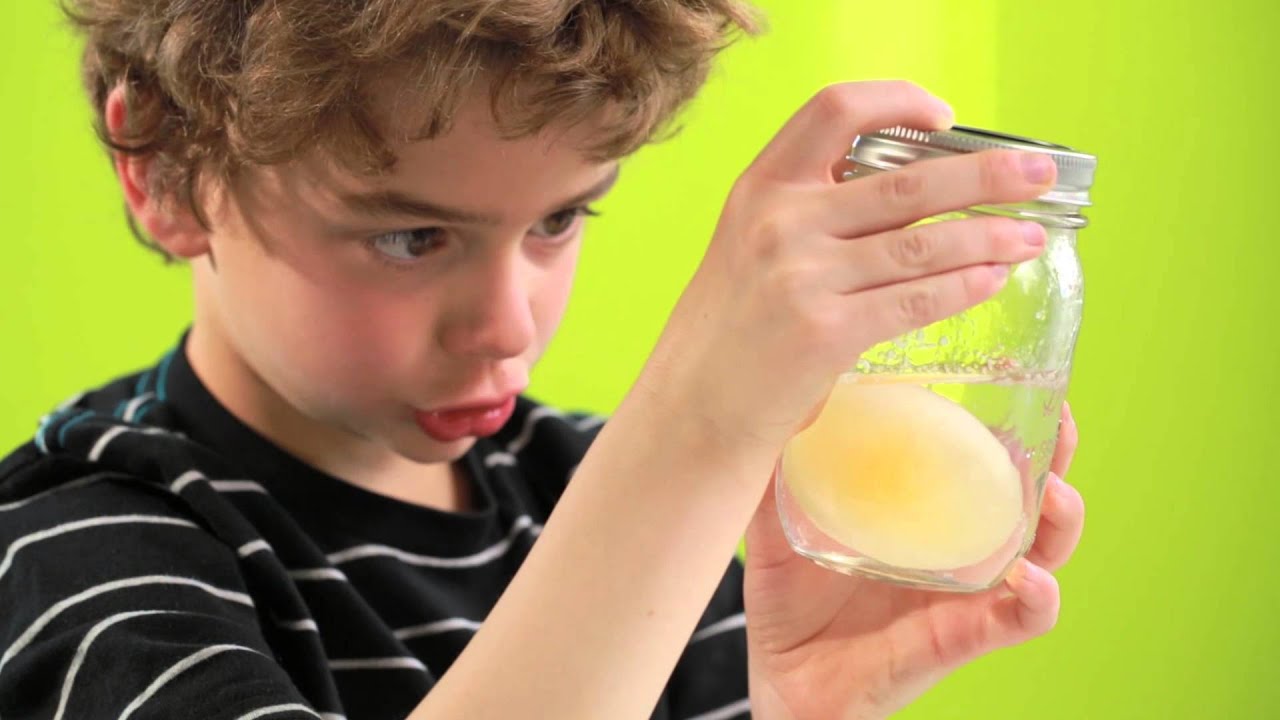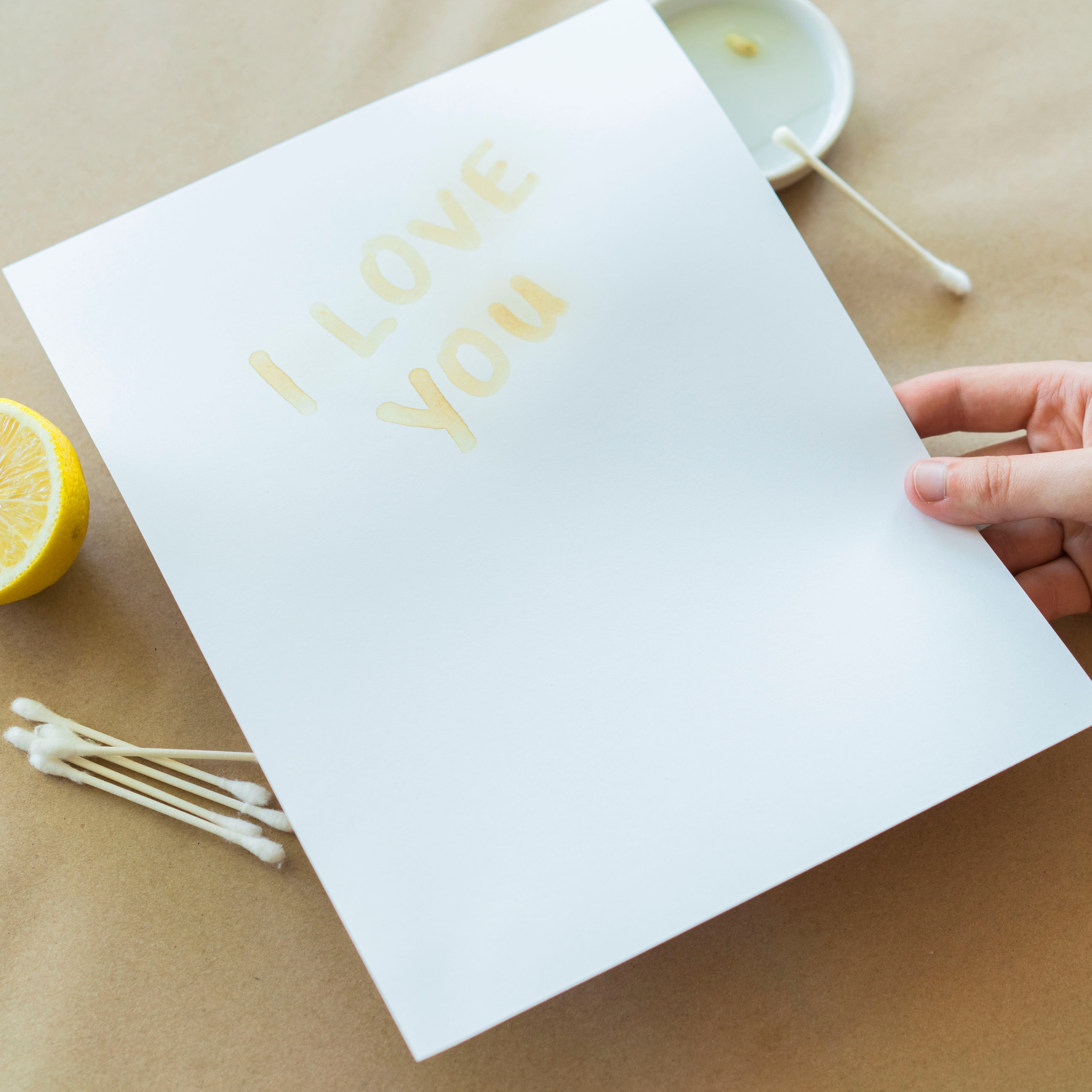- Glow in the Dark Flower
(Ages 7-14)
Make a plain white flower glow in the dark in this simple experiment using household materials. All you need is a jar, a neon highlighter, and a flower!
- Baking Soda-Powered Boat
(Ages 7-16)
Fizz, fizz, zoom! This baking soda experiment boat is easy to build and fun to race.
Discover more about the science of pressure with a Bottle Rocket kit from the KiwiCo Store! Assemble a launcher, rocket, funnel, and launch mixture to experience some extremely fizzy fun.
- Borax Snowflakes
(Ages 5-8)
Take your winter decor to the next level with borax snowflakes!
This project made a fun science experiment and craft in one. The kids got to learn about solutions and see the "magic" of borax crystals forming and we got to make beautiful snowflakes to decorate our winter table centerpiece. The kids can't wait to experiment with different shapes and colors next time!Borax (sodium tetraborate) is a naturally-occurring mineral salt commonly used as a laundry booster or cleaner.
As with any other cleaning product, it should be kept away from children not under direct supervision of an adult.
Do not allow children to ingest Borax. If consumed, contact a poison control center immediately. Wash hands after play, as prolonged skin exposure may cause irritation.
Want to learn more about chemistry without the hassle of gathering materials? Explore the science of crystallization with a Crystal Chemistry Garden from the KiwiCo Store!
- Egg Geodes
(Ages 9-16)
Have you ever grown your own crystal geodes? Try this egg experiment and grow your very own borax crystals in a shell! Experiment with different borax concentrations and see how big your egg geodes can grow.
Discover everything that eggs have to offer with Eggsperiments from the KiwiCo Store! Use the scientific method with a series of egg-based experiments that explore chemistry, physics, and biology.
- Contact Solution Slime
(Ages 9+)
Create fun that's clearly awesome with contact solution slime!
Slime is a super fun ooey gooey substance that is somewhere between liquid and solid. There are a lot of different ways to mix up slime, but this concoction uses contact solution to create an extra stretchy experiment.
Want more slimey science fun without the hassle of gathering materials? Explore the science of thermochromism with Color Changing Slime from the KiwiCo Store!
- Fizzy Lava Lamp
(Ages 5-16)
Have you ever seen a lava lamp? All of the colorful wax that rises and falls, bobbing around--it's mesmerizing! You've probably wondered how to make one. This is an easy science experiment that you can do at home to create your very own homemade lava lamp. And it only takes a few common household ingredients!
Looking for ways to keep your young scientist engaged and learning? Learn about chemistry and practice art skills with Planet Bath Bombs from the KiwiCo Store!
- Carbon Sugar Snake
(Ages 12-16)
Make a fiery black snake rise from the ground with this exciting experiment! Using simple household ingredients, learn how a burning mixture of baking soda and sugar can create a stunning carbon snake. Always be careful when conducting experiments involving fire. Be sure to only light the sand on a safe fireproof base in a well ventilated area. Keep water nearby as a precaution. Remember to tie back long hair and never leave flames unattended or unsupervised by an adult.
Want more slithery science adventures? Discover robotics by building your own Remote-Controlled Snake Robot from the KiwiCo Store!
- Copper Plated Coins
(Ages 9-16)
Use some household materials to plate your coins with copper! You can also try copper plating designs onto your coins!In this project, you’re going to do two things: put copper into a solution, and make that copper come out of the solution and stick to another piece of metal (the quarter). That first process is called “electrolysis” and the second is called “electroplating.” So how do you do those things? Well, their scientific-sounding names give you a clue: with electricity!
Electrolysis is a way to dissolve bits of metal into acidic liquids like vinegar. When you run electricity through vinegar, the vinegar helps to carry electricity from one side of the circuit to the other. Those bits of the vinegar react with the copper, making little bits of copper leave the positive side of the circuit and go into the liquid. You’ll see this happening when your solution turns blue.
Electroplating is a way to put those little bits of copper onto something else. The bits of copper are ionic, which means they have an electrical charge, like a balloon that you rubbed on your hair. And just like a charged-up balloon, ions love to stick to things! By giving them another electrified metal, they rush out of the solution and onto the metal’s surface. You’ll see this when your quarter starts to change colors. With just a little electricity, you can use electrolysis and electroplating to plate a quarter with copper. Does that make it look like a penny to you?
Introduce your young electrical engineer to even more techniques with a Light-It-Up Electronics Set from the KiwiCo Store -- perfect for engineering your very own light-up circuits!
- Egg in Vinegar Experiment
(Ages 5-11)
Want to see a chemical reaction in action? With this egg in vinegar experiment, we observed and followed a regular egg through a transformation to become a bouncy egg. You can too with just a few repurposed ingredients you may have around the house for Easter!
This experiment allows you to see how two common household materials react — eggshell and vinegar. When these materials come in contact, a (safe) chemical reaction takes place and creates new compounds. This easy experiment is great for children to do on their own, and fun to observe how the egg changes over time.
Want to explore more kitchen science experiments? Explore the tastier side of learning with Science of Cooking: Ice Cream from the KiwiCo Store!
- Invisible Ink with Lemon Juice
(Ages 5-16)
Write secret messages to your friends and family and then let them decode it with any source of heat - like a candle or an incandescent light bulb!
Want to learn more about chemistry without the hassle of gathering materials? Explore the science of thermochromism with Color Changing Slime from the KiwiCo Store!
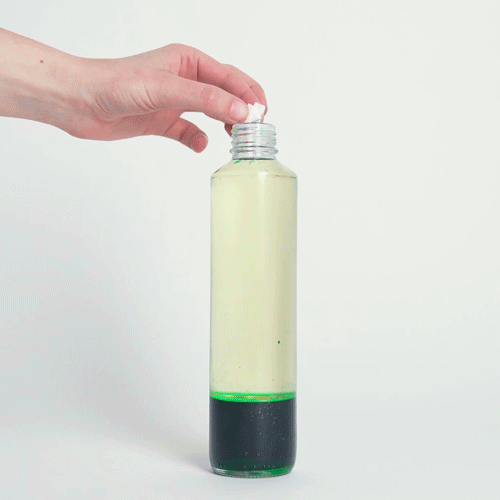
10 Crazy Chemistry Experiments for Kids
Turn an egg into a bouncy ball! Make a flower glow in the dark! Drop a quarter into a cup of water and pull it back out coated in copper! These crazy chemistry experiments may seem like magic tricks, but they're also great ways to give your emerging mad scientist a crash course in chemical reactions.
